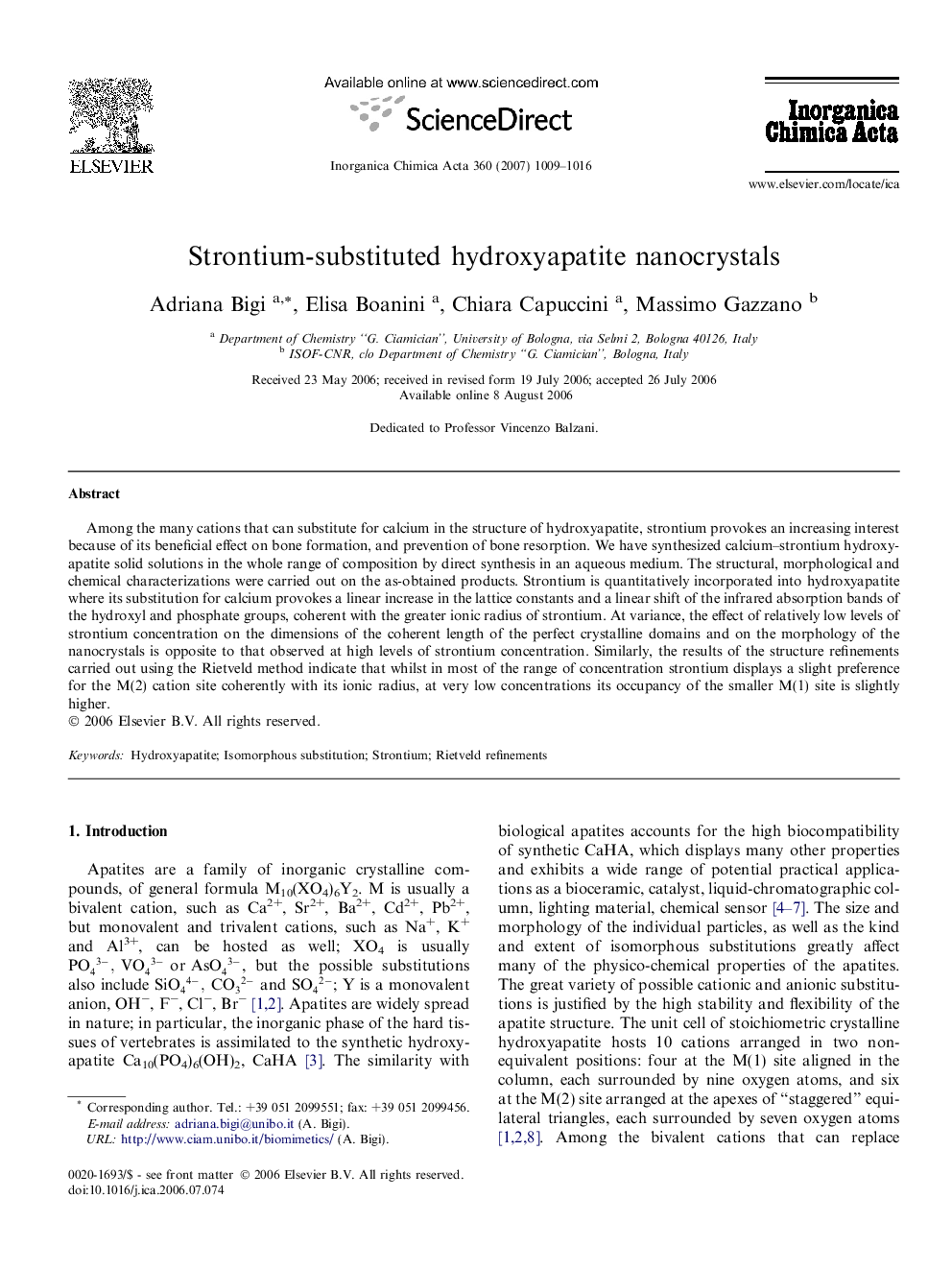| Article ID | Journal | Published Year | Pages | File Type |
|---|---|---|---|---|
| 1312780 | Inorganica Chimica Acta | 2007 | 8 Pages |
Among the many cations that can substitute for calcium in the structure of hydroxyapatite, strontium provokes an increasing interest because of its beneficial effect on bone formation, and prevention of bone resorption. We have synthesized calcium–strontium hydroxyapatite solid solutions in the whole range of composition by direct synthesis in an aqueous medium. The structural, morphological and chemical characterizations were carried out on the as-obtained products. Strontium is quantitatively incorporated into hydroxyapatite where its substitution for calcium provokes a linear increase in the lattice constants and a linear shift of the infrared absorption bands of the hydroxyl and phosphate groups, coherent with the greater ionic radius of strontium. At variance, the effect of relatively low levels of strontium concentration on the dimensions of the coherent length of the perfect crystalline domains and on the morphology of the nanocrystals is opposite to that observed at high levels of strontium concentration. Similarly, the results of the structure refinements carried out using the Rietveld method indicate that whilst in most of the range of concentration strontium displays a slight preference for the M(2) cation site coherently with its ionic radius, at very low concentrations its occupancy of the smaller M(1) site is slightly higher.
Graphical abstractStrontium is quantitatively incorporated into hydroxyapatite where its substitution for calcium provokes a linear increase of the lattice constants and a linear shift of the infrared absorption bands, coherent with the larger ionic radius of strontium. The effect of low levels of strontium on crystallinity, morphology and cationic site distribution is opposite to that observed at high strontium concentrations.Figure optionsDownload full-size imageDownload as PowerPoint slide
